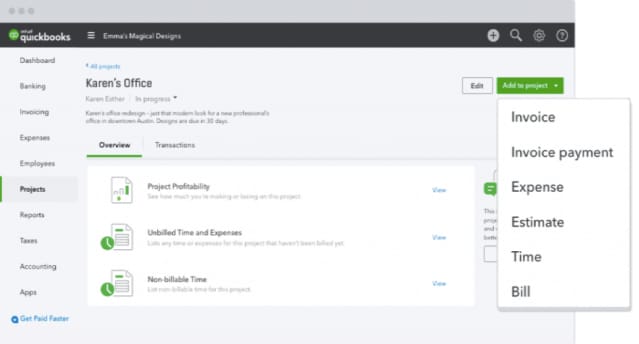It’s never easy running a small business or being self-employed – especially for those just getting started and learning the ins and outs of reporting and keeping track of your business’s books. Thankfully, QuickBooks’s reporting capabilities make it easier to keep your business on track. Here are some useful tips from our community of entrepreneurs to make the most of your QuickBooks reports.
1. Understand KPIs to Gauge Business Health

Financial KPIs (key performance indicators) are tangible markers businesses use to measure a variety of areas of a company, from marketing to finance to HR. Here are two important ones to keep a pulse on.
Gross Profit Margin
Your gross profit margin tells you whether you are pricing your goods or services appropriately. Here is the equation to calculate this:
Gross profit margin = (revenue – cost of goods sold)/revenue
Your gross profit margin should be large enough to cover your fixed (operating) expenses, and leave you with a profit at the end of the day.
Net Profit
Your net profit is your bottom line — the amount of cash leftover after you’ve paid all your bills and expenses. You can figure out your net profit using simple subtraction:
Net profit = total revenue – total expenses
Thankfully, QuickBooks keeps all these numbers handy so you can figure out how your company is performing with ease.
2. Use Projects to Keep Track of Your Business

Projects is a new feature in QuickBooks Online Plus that helps you organize all the moving pieces of your work, including transactions, time, and running reports so you always know where you stand with all your jobs.
Some useful tips for staying organized:
- Keep all job-related information in one place.
- Connect invoices, expenses, and transactions to each individual project.
- View all of your open jobs to see exactly where you’re spending your time and money.
Try it out! Turn on projects in QuickBooks Online Plus:
- Select the Gear, and then Accounts and Settings.
- Select Advanced.
- Turn on projects.
3. Report Sales Tax Correctly

Managing sales taxes may sound routine, but the process can be complicated and time consuming. Because the sales tax percentage differs by state, the profit recognized on sales in different states may change. For most, a sales tax is imposed by a government entity, typically a city, county, and – with a few notable exceptions – states. The tax is incurred on the sale of goods and services, and sellers are expected to collect sales taxes from the buyer and pass the tax dollars on to the government entity. Here are a few tips to make sure you are reporting and collecting the correct sales tax!
Choose the Correct State Nexus
A business must collect sales taxes in the particular city, county, or state that it has a legally-determined nexus (or, a sufficient physical presence). A state nexus, for example, can refer to the people located in the state, or to property owned by the business in that state. The same rules apply to a city or county. Thankfully, there are tools that plug into QuickBooks Online that help you automatically calculate the different sales tax rates you may encounter depending on where you do business.
Deduct State Sales Taxes From Your Federal Return
If you’re self-employed, you may pay federal income taxes using Schedule C of the Form 1040 tax return. Schedule C allows the business owner to deduct sales taxes as an expense, and expenses are subtracted from business income to determine net income (profit) for the year. The taxpayer posts the net income total to page one of Form 1040, along with other sources of income for the year.
Find an Expert
Dealing with sales taxes can be challenging, if you don’t do your homework and put effective systems in place. To address all of the issues related to sales taxes, consider hiring a CPA who specializes in sales taxes. These experts can help you determine when sales taxes should be collected, and the transactions that may be exempt from tax. Maintain a set of written business procedures so that your business will properly handle sales tax issues.
4. Connect your Finances to Get the Most out of your Money

When you work for yourself, there are lots of things to keep track of. Make sure you don’t miss deductions or credits you are owed! Connect all your finances to QuickBooks Online.
When you route all your accounts through QuickBooks Online, every transition is automatically added and sorted. This way, you’ll never miss another tax deduction and always have an accurate, up-to-date overview of your cash flow to help you make more informed business decisions.
There are more than 1,400 financial institutions across the United States and Canada offering online banking services in QuickBooks. Chances are, you’re going to be in good shape. Click here to log into your account and start the quick and painless process of getting yourself set up.
If your financial institution isn’t included, don’t fret; they’ll simply need to be set up as a partner, which they can do here.
5. Be Efficient with Online Shortcuts

While there are a lot of ways to work with QuickBooks Online, we’ve found that most users like a list of quick shortcuts they can refer to for help.
Here are some resources to keep in your back pocket. These include QuickBooks Online keyboard shortcuts for PCs and Macs.